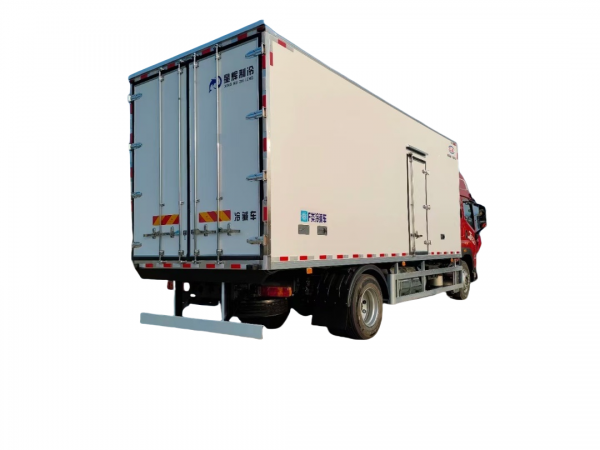Introduction
In the world of logistics and transportation, work truck trailer tracking has become an essential tool for companies looking to optimize their operations, improve efficiency, and enhance security. With the advancements in technology, businesses now have access to sophisticated tracking systems that provide real-time data on the location, status, and condition of their trailers. This article aims to explore the benefits, challenges, and best practices associated with work truck trailer tracking systems, and how they can revolutionize the way companies manage their fleet operations.
Benefits of Work Truck Trailer Tracking Systems
Work truck trailer tracking systems offer a wide range of benefits to companies operating in the transportation and logistics industry. Some of the key advantages include:
1. Improved Asset Visibility: One of the primary benefits of trailer tracking systems is the enhanced visibility they provide over company assets. With real-time tracking capabilities, companies can monitor the location of their trailers at any given time, allowing for better asset utilization and improved operational efficiency.
2. Enhanced Security: Trailer theft is a significant concern for companies in the transportation industry. Work truck trailer tracking systems help mitigate this risk by providing real-time alerts in case of unauthorized movement or tampering with the trailer. This not only helps in recovering stolen trailers but also acts as a deterrent for potential thieves.
3. Route Optimization: By tracking the location of trailers in real-time, companies can optimize their routes and schedules to reduce fuel costs, improve delivery times, and enhance overall efficiency. Trailer tracking systems provide valuable data on routes taken, idle times, and other metrics that can be used to streamline operations.

4. Maintenance Monitoring: Work truck trailer tracking systems can also help in monitoring the condition and maintenance needs of trailers. By tracking metrics such as mileage, engine hours, and temperature, companies can schedule preventive maintenance tasks, reducing the risk of breakdowns and costly repairs.
5. Compliance and Regulation: In the transportation industry, compliance with regulations such as Hours of Service (HOS) and Electronic Logging Device (ELD) mandates is crucial. Trailer tracking systems can help companies ensure compliance by providing accurate data on driver hours, rest periods, and other key metrics.
Challenges of Implementing Work Truck Trailer Tracking Systems
While work truck trailer tracking systems offer numerous benefits, there are also challenges associated with their implementation. Some of the common challenges include:
1. Initial Investment: Implementing a trailer tracking system requires an initial investment in hardware, software, and installation. For small to medium-sized companies, this upfront cost can be a barrier to adoption.
2. Integration with Existing Systems: Integrating a trailer tracking system with existing fleet management software and other systems can be complex and time-consuming. Compatibility issues and data synchronization problems may arise, requiring dedicated resources for implementation.
3. Tanker truck liquid transport and Privacy Concerns: With the increasing use of data in tracking systems, companies must address concerns related to data security and privacy. Ensuring that sensitive information is protected and compliance with data privacy regulations is essential for successful implementation.
4. Training and Adoption: Introducing a new tracking system requires training for employees to understand how to use the system effectively. Resistance to change and lack of adoption by staff members can hinder the successful implementation of the system.
5. Maintenance and Support: Like any technology, trailer tracking systems require regular maintenance and support to ensure optimal performance. Companies must have a plan in place for troubleshooting issues, updating software, and providing ongoing support to users.
Best Practices for Work Truck Trailer Tracking Systems
To maximize the benefits of work truck trailer tracking systems and overcome challenges, companies can follow best practices for implementation and management. Some of the key best practices include:
1. Define Objectives and Requirements: Before implementing a trailer tracking system, companies should clearly define their objectives and requirements. Identifying the specific goals and metrics they want to track will help in selecting the right system that aligns with their needs.
2. Choose the Right System: There are various types of trailer tracking systems available, ranging from GPS-based trackers to cellular or satellite-based systems. Companies should evaluate their needs and choose a system that offers the features and capabilities they require.
3. Train Employees: Proper training for employees is crucial for the successful adoption of a trailer tracking system. Companies should provide training sessions to drivers, dispatchers, and other staff members to ensure they understand how to use the system effectively.
4. Monitor Performance Metrics: Tracking key performance metrics such as fuel efficiency, idle time, and maintenance schedules is essential for optimizing operations. Companies should regularly monitor these metrics and use the data to make informed decisions for improving efficiency.
5. Address Data Security: Data security should be a top priority when implementing a trailer tracking system. Companies should ensure that sensitive information is encrypted, access controls are in place, and compliance with data privacy regulations is maintained.
6. Provide Ongoing Support: Offering ongoing support and maintenance for the tracking system is essential for its long-term success. Companies should have a dedicated team or partner to address technical issues, update software, and provide assistance to users.
Conclusion
Work truck trailer tracking systems have become a valuable tool for companies looking to optimize their fleet operations, improve efficiency, and enhance security. By providing real-time visibility, route optimization, maintenance monitoring, and compliance with regulations, these systems offer a wide range of benefits for businesses in the transportation and logistics industry. While there are challenges associated with implementing tracking systems, following best practices can help companies overcome these obstacles and maximize the benefits of this technology. With the right system in place and a strategic approach to implementation, companies can revolutionize the way they manage their work truck trailers and achieve greater efficiency and security in their operations.
